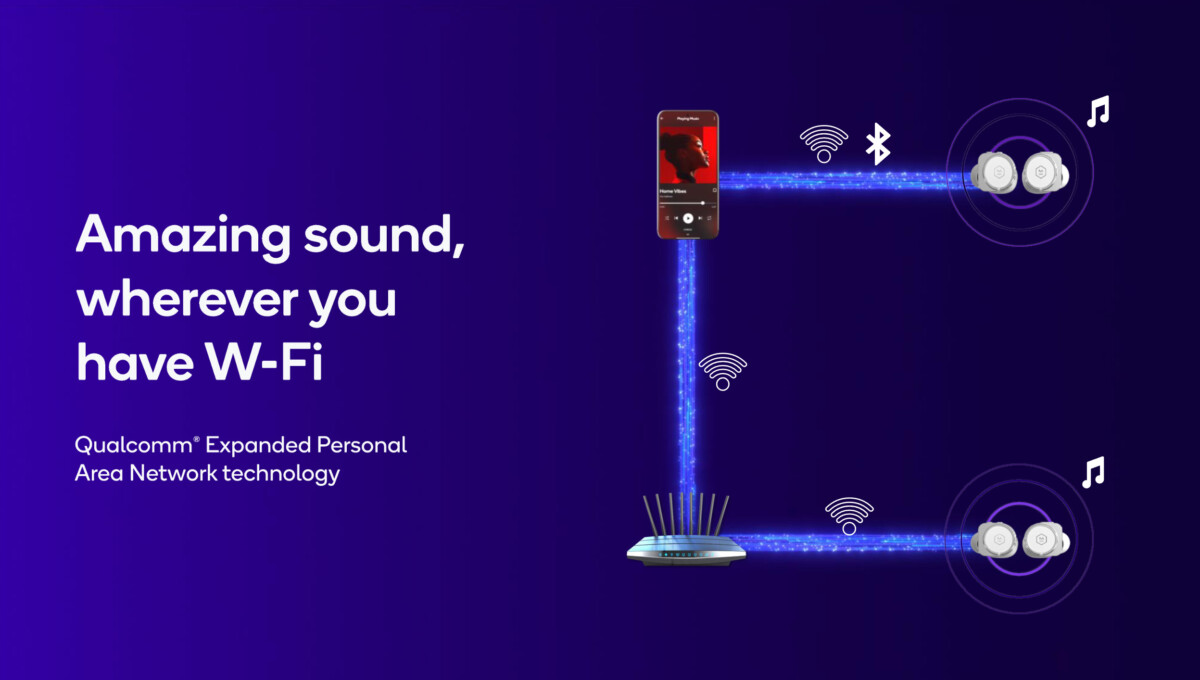Qualcomm has unveiled its new chips for wireless headphones and earphones, the S7 and S7 Pro. On the program, a direct connection of the headphones to the Wi-Fi network for sound without loss or latency.
This week, Qualcomm is hosting its annual event, the Snapdragon Summit. The opportunity for the American brand to unveil its new SoCs for smartphones or ARM processors for PCs, but also its latest innovations for wireless audio.
On this occasion, Qualcomm presented its new audio platforms, Qualcomm S7 and Qualcomm S7 Pro. If the company equips smartphones with mobile chips, it is also one of the main players in wireless headphones and headsets, since it offers processors responsible for audio processing, noise reduction or the Bluetooth signal. . The S7 and S7 Pro platforms are therefore intended to equip future high-end wireless headsets and earphones.
As for the Qualcomm S7 platform, it should allow computing power multiplied by 100 thanks to AI, in particular for analyzing ambient noise or decoding the Bluetooth signal. Qualcomm also announced, during the launch, the arrival of its fourth generation of active noise reduction. The chips are also obviously compatible not only with Bluetooth LE Audio, but also with Bluetooth 5.4 and with functions linked to Snapdragon Sound.
Direct connection of your headphones to the Wi-Fi network
The main novelty actually comes from the Qualcomm S7 Pro platform. This takes advantage of new technology, in addition to Bluetooth, to benefit from low latency in gaming and lossless audio quality up to 192 kHz. To do this, Qualcomm announced its new XPAN technology based on a Wi-Fi signal. Like wireless gaming headsets, headsets and headphones equipped with a Qualcomm S7 Pro chip will be able to benefit from a high quality connection and without latency.

Even more, while until now it was necessary to use a USB dongle to benefit from this type of connectivity, Qualcomm promises a smooth transition from Wi-Fi to Bluetooth and vice versa thanks to its XPAN technology. Enough to allow you to switch from Bluetooth at home when you are near your smartphone, to Wi-Fi when you move away from it and are no longer in range.
Obviously, this XPAN technology comes with its share of constraints. Since the sound signal will pass through the Wi-Fi network, your smartphone must be connected to Wi-Fi. The function cannot therefore be used while traveling or on public transport. Furthermore, the smartphone must also be compatible with Qualcomm’s XPAN technology and therefore benefit from a latest generation Snapdragon chip.
As always with headsets and earphones equipped with Qualcomm chips, manufacturers could also not integrate this functionality if they judge that they do not need it. It will therefore not only be necessary to wait before discovering the first compatible products, but also to ensure that they actually embed XPAN technology.
Want to join a community of enthusiasts? Our Discord welcomes you, it is a place of mutual help and passion around tech.
